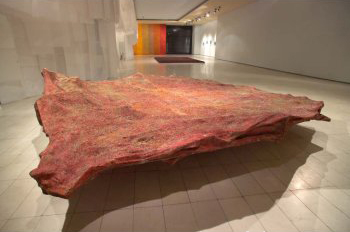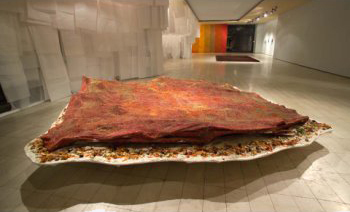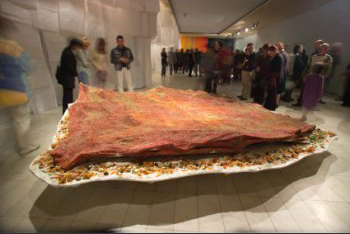φ21°33', λ41°21'
Ecology Information No. 3
June, 2007 |
| 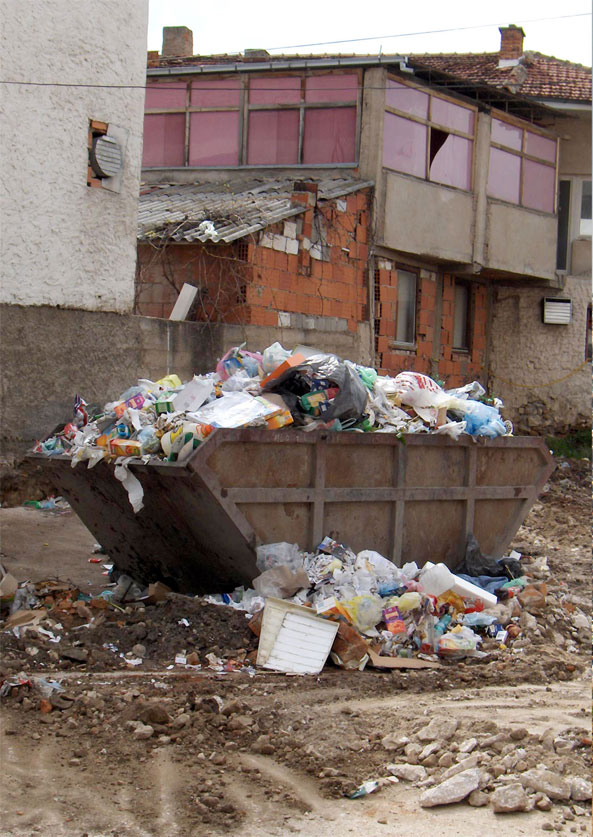 | 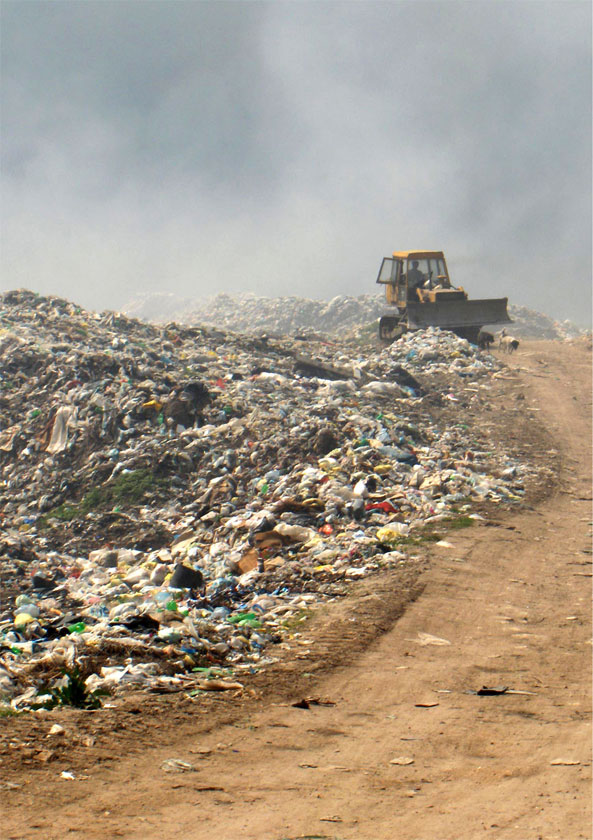 |
THE SITUATION WITH COMMUNAL WASTE IN PRILEP
The situation with communal waste material in Prilep is not at satisfactory level, and the existing dump does not meet the basic criteria for its disposal. Referring to estimations, about 500 000 tons of waste has been disposed of in the dump so far, and new 40 000 tons are disposed each year. Due to inadequate treatment of the waste material, this dump is a serious environmental problem, especially hazardous to humans health. Activities taken in the frames of the project for waste management in southeast of Macedonia will probably improve the situation. The project covers an area of 35 municipalities (Prilep, Bitola , Kicevo, Ohrid, Resen, Struga, etc.) and it will help overcome the problems of collection and disposal of waste materials and minimize the health hazards to the population, which will improve the environment of the whole region. By this project, the central dump in Prilep will cover an area of 20 hectares and a volume of 3 000 000 m3 water, with 20-year period of exploitation. From the total area of southeast Macedonia it is expected to generate approximately 140 000 tons of communal waste per year. In fact, this will be only the first phase for realization of the project - collection and disposal of waste, which will eventually yield 22 million euros. Future steps should include selection of waste and treatment of selected raw and other inorganic materials. Meanwhile, the waste will be disposed of in the dump of Prilep.
SOLUTION TO THE PROBLEM WITH COMMUNAL WASTE IN PRILEP As mentioned above, the existing dump already contains approximately 500 000 tons of communal waste, with disposal of new 40 000 tons each year. According to some prediction, in near future, measures will be taken for selection of communal waste and treatment of selected raw materials. We offer a solution for communal waste in Prilep, not only for the existing one but also for the waste that will be collected and disposed of according to the project for southeast Macedonia. It can be realized through construction of appliances for treatment of communal waste by pyrolysis at low temperatures and creation of renewable materials and electric energy. Hereby the existing dump will be destroyed and transformed into cultivated area. Instead of being disposed of, the waste material collected at daily basis will be directly eliminated. The same method will be applied in the case of communal waste that will be collected with the project southwest Macedonia. Accordingly, it is not necessary to occupy an area for a new dump of 20 hectares and there is no need to dispose the waste of and to wait for better times for selection and treatment of selected raw materials.
Kiril Nasteski, architect
|
 Photography,
Petre Nikoloski, 2006 THE VILLAGE AND ITS ECONOMY
In the past, the villager had hard conditions for life and for survival, but it seems that even nowadays the situation has not changed to something much better. Right here and right now, my "colleagues"-farmers and me are in a very difficult position. Despite the fact that we, with our labor and our products, represent the major basis for survival and development of the nation and country, our status and existence as farmers is put under question. Beside other agricultural products, many of our farmers - your farmers - poor and exhausted, humiliated and undervalued producers of food (read: BREAD), supply over 90% of the needs of the country, and we are still hungry. Why that? Bread - how proud it sounds! Bread means life, nice and sweet life; we, the farmers, produce it, but we are deprived of it. No one takes care, no one asks how it grows and what are the costs, as if it was a gift from some other planet and not a product from our mother land. We, the farmers, villagers who do not know for rest and holiday, we are now left hungry, with no one around to help us. Our last harvest of wheat has not been paid yet, and here comes the new sowing season, time to manure our fields in order to have an abundant and good quality crop. I sold 18 tons of wheat, but I've still not been paid for any of it. Who is responsible? I, who produced it, or he who bought it, but didn't paid for it? He is satisfied and I am hungry and poor, together with my family. I don't know why, but I feel guilty for my bread. It is thrown and trampled everywhere. My poor bread, they eat it and give no money for it! Why don't they pay me for my labor and for my existence? Our honest work, our pain and our sweat - all that in vain. Someone humiliates us systemically, and we are just hardworking and diligent people. Is it everywhere like this, or only here? Just how long we are going to be toilers with no money, will this ever finish? We would like to believe that this situation is approaching the end and that there is a light at the end of the tunnel. Aco Aleksoски, Dipl.Ekon. 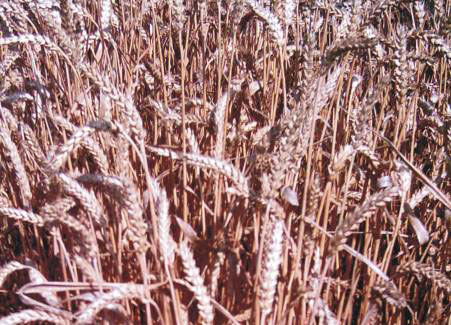
"Organic grain production",
Prof. Dr Goce Vasilevski, 2006
|
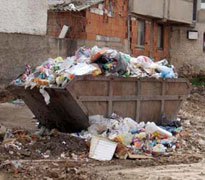
The Holly Transfiguration Monestary - Zrze | | 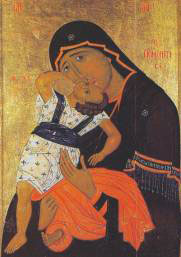
Icon of The Mother of God Pelagonitisa. The Holly Transfiguration,
Monastery Zrze, 1422, Paintet bu Hieromonk Makarie The Zographer |
HISTORY OF NUTRITION AND PROCESSING OF AGRICULTURAL PRODUCTS Humans, as any other living organisms, take the food to satisfy their energetic and biological needs. The food is essential for life and it is something that can not be avoided. Historically, as a nomad or hunter, the man fed on raw products that he had found in nature, but in the course of the evolution he began to prepare them in different ways, to cultivate them and preserve them, etc. The increased development of urban environments and industry favored the procession and trade of nutrition products. Consumers have always expected the food they take to be of high nutrition value and safe. For this reason, laws have been adopted since long ago for regulation of primary production, industrial procession and trade with food products and they are constantly improved and updated. Safe nutrition is the first defensive mechanism from the negative effects of the contemporary life style, full of stress, pollution, radiation, toxic chemicals and infectious diseases. The proper amount of food taken in proper time ensures enough energy for daily activities, freshness and cheerful mind during the day. Nutrition science undergoes constant changes of its conception. The last century started with the terms "adequate", "traditional" or "balanced nutrition", which was followed by the concept of "optimal food", to be transformed by the end of the century into a concept of "functional food". The future of agriculture will move into the following directions: traditional, sustainable, organic production and production of genetically modified organisms, whereas the future of industrial production of food products - in complete implementation of world standards. Production and procession of food in the region of Prilep must be directed toward establishing a system of good relations among the environment, breeders, practitioners and consumers. Within this system, it would be necessary to create a brand of food products from Prilep that will secure affirmation of the region and safe economic future. Prof. Dr Goce VASILEVSKI  Photography,
Petre Nikoloski, 2006 | |



